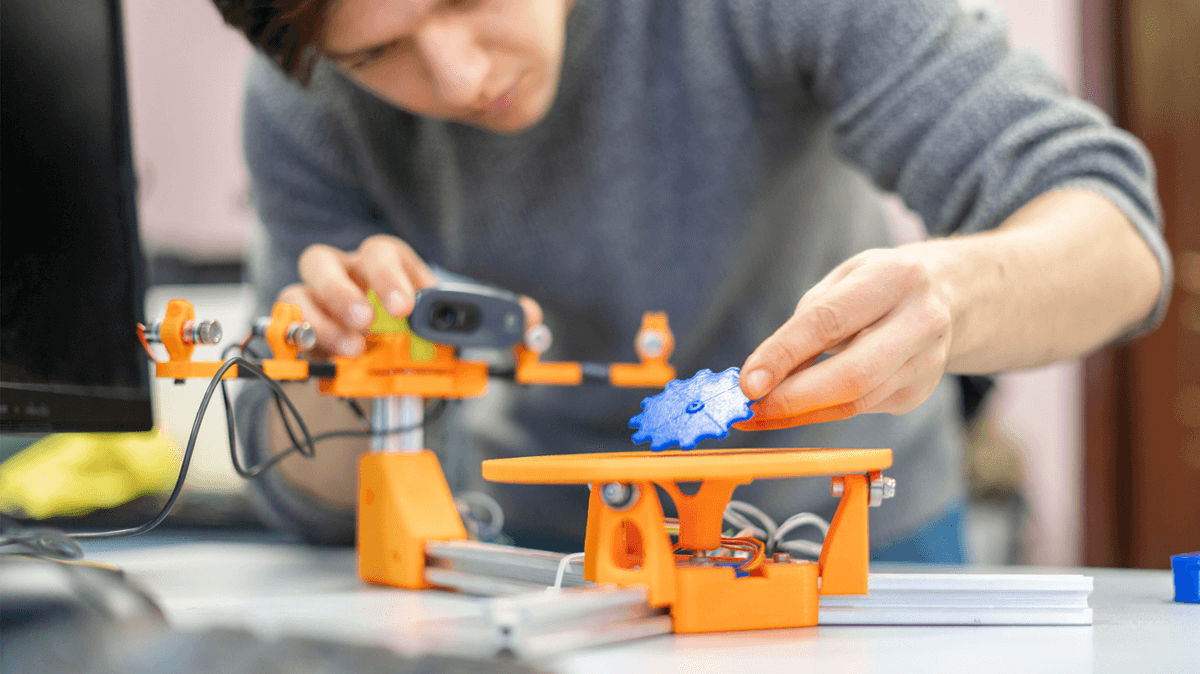3D scanning is a seemingly simple process, but there is actually quite a lot that goes into it. The concept of 3D scanning can be defined simply as a means of transferring the size and shape of a physical item into a computer system accurately, thus transforming it into a digitalized 3D object. It is indeed a simple, non-destructive process that also features no contact. 3D scanners use a laser beam capturing the framing points of the physical object in a digital data form. These are called the point clouds.
The 3D scanners are highly accurate to the shape, size and form of the object being scanned. They perform the function rather quickly, no matter how complicated the aspect of it all may sound. 3D scanning is generally ideal for many different fields, but in a nutshell, for measurement of some of the most contoured and complex shapes and geometries. It is also ideal for scanning of such objects whose measurements would render useless if done through traditional means.
Different types of 3D scanners and their applications.
3D scanner has got a business perspective in the world of today in industries, reverse engineering, architecture and quality reassurance. It remains a complex matter still, needing to be learned skillfully to be mastered. We have many technologies of 3D scanners today, and with so many, their applications become quite limited. In many areas, on the other hand, an overlap between different kinds of technologies can also occur. In the market, you will find so many different types of 3D scanners with different sorts of applications.
It can easily get confusing as you look through the market. One thing to be aware of is that no matter how simple or complex a model you choose, diligence is necessary. It is a quick process, but requires patience while learning and getting the hang of the process. File-fixing issues are also common, and will need solving. To get there, it can get difficult for a home user. Therefore, patience and diligence are key.
An important fact to keep in mind is that the perfect 3D scanner does not exist. Reason for this being that every 3D scanner is designed to measure different things in different ways and so on. Different fields have a requirement for specific kinds of 3D scanners. Many models can be highly specific to their functions and applications. A scanner used for measuring the size and form of a truck is not meant for doing the same for an airplane per say.
Choosing a 3D scanner
Plan accordingly before heading out to look for a scanner. You should keep in mind, your requirements, what you want to measure, if it is for home use or for the office, your budget, and space available for storing the scanner.
Let’s begin by diving into the most inexpensive 3D scanners you can find and see what they offer and how they perform. The most inexpensive ones you can find are between the range of $100 to $1500 USD.
Ciclop 3D Scanners

This one costs between $100 to $280 USD. Coming from BQ, this is a Do It Yourself type of a 3D scanner. It requires assembling according to the manuals. The scanner allows you to 3D scan any physical item that is able to fit the size of its rotation platform. You will have the option to manipulate the scanned documents further digitally. Once you are done with your editing and manipulation, you can then print this manipulated model to create an innovative object of your own.
This is a true open source scanner and is a part of the Technological Heritage of Humanity.
Features
It has an open source, indicating its creation to cater to the masses. If you have the files, you can avail all that this 3D scanner has to offer. The files are readily available online on the web including the algorithms, designs, mathematical concepts, experiments and more. After all of this, you just need to get a 3D printer to make your own 3D object. How cool is that?
The Ciclop 3D scanner also has dual laser setup, meaning two lasers work from both sides of the platform to scan your desired object. The lasers, along with the camera, are capable of capturing details of up to 500 microns. This is pretty great for a DIY 3D scanner that falls on the affordable spectrum on the market. The scan area is 9.8” x 8.0” in circular dimensions.
It has Horus software, the best one for connections between the PC/ Mac and the 3D scanner. It also has a Logitech C270 HD camera for capturing the frames and measurements or paint clouds.
Overall, for a beginner, this 3D scanner is recommended as it is affordable and fairly easy to get the hang of properly.
3D Scanners between $1500 to $5000 USD
Scanners within this price range require a more detailed grasp about the 3D files and how to operate them. They can be a challenge to work with in the beginning, but worth the effort in the end especially if you scan on a regular basis.
NextEngine laser Scanner
Priced at $3000 USD, this is a particularly easy one to use. This is ideal for artists or people who work in museums. It works splendidly for capturing details and colored objects and items. Keep in mind that this scanner does not work ideally with shining or reflective objects.
This scanner features the NextStudio Software and a turn table as well for easy object placements. Considering the quality, features and price point, this scanner turns out to be quite affordable for what it is offering, the software is particularly good on this one. The movie Rogue One features work done by this scanner.
If you are looking for something that works great with shiny objects, then check out the Thor3D scanner.
High end, Professional 3D Scanners $5000 USD +
Now, reaching the top of the price range spectrum, let’s have a look at what those expensive 3D scanners really have to offer.
Artec Eva
This is a well renowned 3D scanner, priced at $14,000 USD. It is a versatile product that is not limited to specific applications but is broadly open to many of them. This is a handheld device, coming prepared with the software kit. It is perfect for the measurements of medium size objects.
Artec LEO
This is another scanner from Artec, however, it is impeccable in speed capturing and a highly efficient and easy to handle software program. It is so smart that it lets you know immediately if you have missed an area of the object you are scanning. It is safe to say, that at this time, Artec LEO is the smartest handheld 3D scanner on the market. It features Artec Studio, an easy to grasp yet powerful software program.
In conclusion, it is the 3D scanner of dreams, super easy to become a master with, worth the price tag and gives you everything that you can possibly want from a 3D scanner.
Conclusion
We started with the basics, applications, types and price ranges of 3D Scanners and now it is obvious that you have learned all that you need in order to start looking for your very first 3D scanner. If that is not the case, maybe you were looking for a newer and better scanner for some different application, you have the answers right here with benefits and prices mentioned of specific models.
It is always important to note how small things such as the shiny appearance of an object can make such an extremely expensive 3D scanner fall short in its applications. Different technologies are often specific, where they can perform one task but not the other no matter how simple it may seem to us. Behind the scenes, a lot of technological and mathematical knowledge goes into a 3D scanner. It seems simple on the surface but can be entirely a different thing in the background.
Services such as the Direct Dimensions provide solid recommendations on which technologies offer which applications based on your needs and requirements. If you are stuck and cannot decide on your own, definitely check with them before making a purchase.
All in all, an expensive 3D scanner will be less hard work and provide much faster and better results in comparison to an affordable option. You also get higher resolution results in measurements, so what’s not to love? But as a beginner as well as a professional, it is recommended to educate oneself about fixing softwares and learning about specific technologies and applications. Now, you can go ahead and get started by researching further or ordering right away if you feel like you are ready to get your own 3D scanner.
